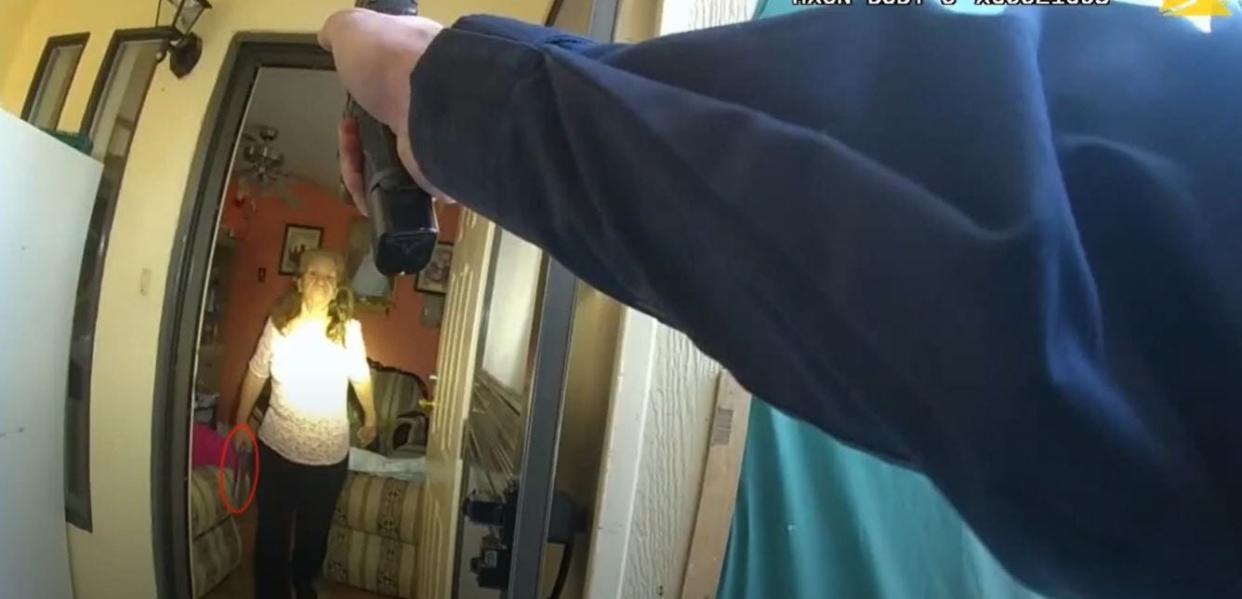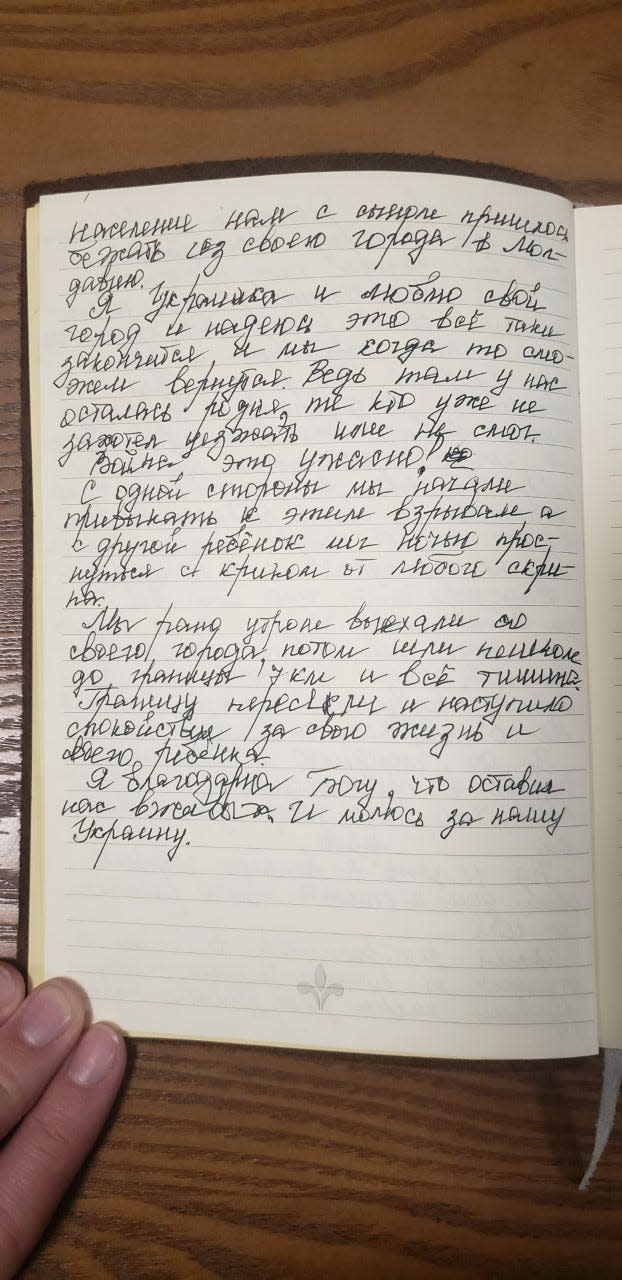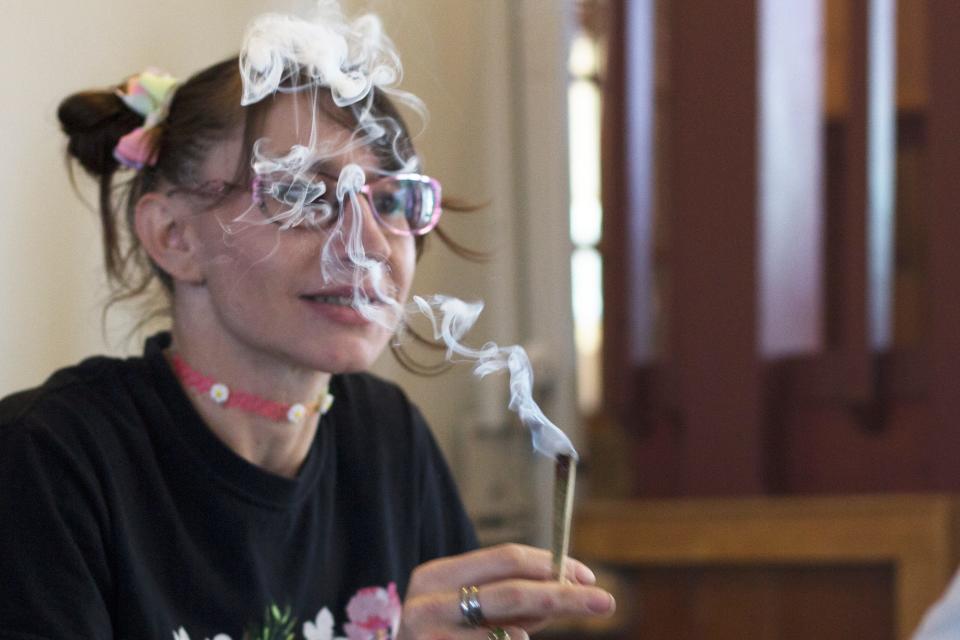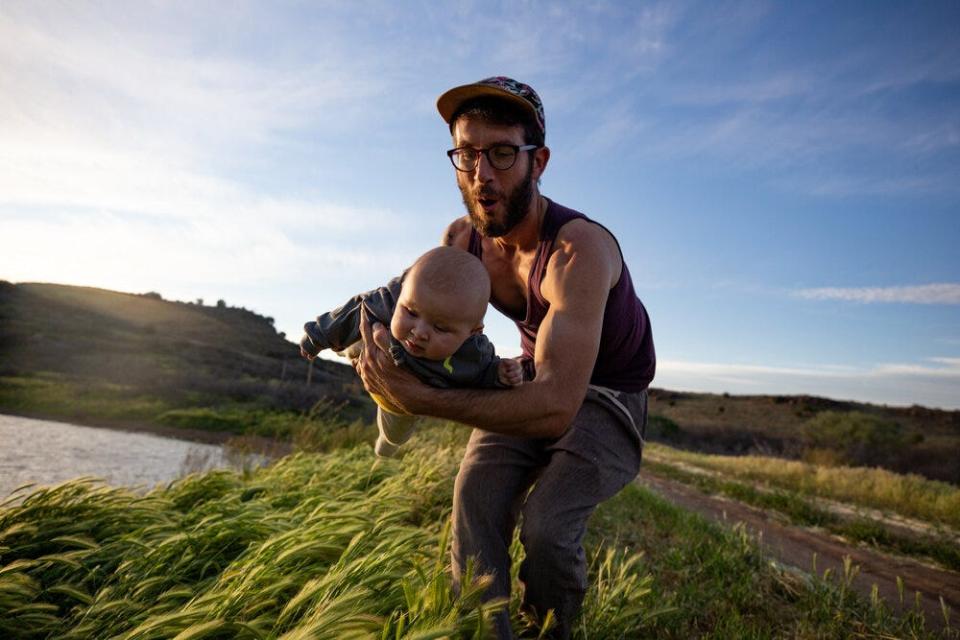Police shooting raises questions, Ukrainian letters translated and cannabis lounge opens

LCPD shoots 75-year-old woman suffering from dementia
Las Cruces Police confirmed on Monday that an officer shot and killed a woman Saturday evening, April 16, after several reports from local news outlets reported the police shooting.
In a news release, the department confirmed that officers responded to the 800 block of Fir Avenue around 6:30 p.m. on April 16. Police said they were responding to a call regarding a woman with a knife making homicidal threats toward another person. Police discovered a woman, 75-year-old Amelia Baca, at the house.
However, the department did not release any other details about the shooting — including the victim's name — until after 7 p.m. Friday. (They still have not identified the officer who shot and killed Baca.) On Friday night, the department released a video detailing the department's account of the shooting.
Justin Garcia, the public safety reporter for the Sun-News, has been covering the shooting since it happened. Inside the newsroom, there has been great consternation about the opaqueness we've experienced from the City and LCPD around this shooting. And we're not alone, as Justin explained:
Many readers assume that print and television journalists have a rivalry that runs deep. But nothing could be further from the truth. Do we compete for stories? of course we do. But oftentimes we work together in small ways to make sure that the public knows the truth. That was the case in the Amelia Baca shooting. During a city council meeting last Monday, KVIA's Kate Bieri asked if I would hang out with her while we waited for LCPD Chief (Miguel) Dominguez to arrive. The tiny collaboration was a valuable endeavor because, as the saying goes, two reporters are better than one. Sure enough, we each got to talk to Dominguez on our own and the community was better for it.
This newsletter also has a companion podcast, through which we try to pull back the curtain and bring readers into the reporting process. This week, we talk a lot about how we're now covering cops, courts and crime — or public safety reporting, as we're now calling it. We also talk about the challenges we've encountered covering the Amelia Baca case.

Las Cruces resident translates journal entries of Ukrainian refugees
When Las Crucens John and Robert Curnutt traveled to Moldova in March, they not only worked to help Ukrainian refugees, they also collected stories of people displaced by war.
The father and son told the Sun-News that a large part of what they did was drive people to refugee centers, train stations and other locations after they had crossed the border from Ukraine to Moldova. The rides were often quiet as people rested, knowing they were safe.
John took a journal with him and throughout the two weeks he and his father were in Europe, he passed the journal around to those willing to write their story.
Las Crucen Katya Moore, who is from Russia and a friend of the Curnutt family, translated the entries. She said she was surprised to find all of the writing in Russian rather than Ukrainian— though both are Slavic languages and use similar alphabets.
Our reporter, Leah Romero, has been following this story. She said:
I spoke with John and Robert Curnutt several weeks ago about their trip to Moldova to help Ukrainian citizens fleeing the country as Russian forces invaded the country. John mentioned he took a journal with him and asked people to write down their stories while he drove them to their next destination -- a train or bus station, refugee center, family or other places. He also mentioned that he planned to have the journal entries translated.
This intrigued me and he was willing to share the entries and translations with me. A family friend, Katya Moore who is from Russia, translated the entries. The Russian and Ukrainian languages use a similar alphabet.
Most of the entries gave an account of how the Ukrainian citizens came to a decision to flee their country and that they hoped the conflict would end so they could go home. Some mentioned that this was not the first time they fled. The conflict is still ongoing and Ukrainians are still trying to find places to stay until they can return to their eastern European homes.
John mentioned to me recently that he and his family are still working to help the refugees any way they can while in the U.S.

Another first: Las Cruces gets state's first cannabis consumption lounge
Dozens of customers patronized the only cannabis consumption lounge in New Mexico to celebrate the first 4/20 since personal use and retail sales of weed became legal.
Though city code limits licensed cannabis consumption areas to indoor spaces, Sol Cannabis operated both an indoor lounge and outdoor patio on Wednesday.
The City of Las Cruces did not immediately respond to a request for comment Wednesday, though the municipality did remind residents and businesses of rules regarding cannabis in a Tuesday news release.
On April 15, Sol owner Kwame Ponschock said the city had given his business the okay to operate the outdoor patio.
Sol Cannabis, at 523 East Idaho Ave., opened in the building which used to house Si Italian Bistro. Sol Cannabis also operates a retail dispensary for medical and recreational users in the building.
Reporter Michael McDevitt, who covers city and county government for the Sun-News, was there on 4/20:
On April 20, I got the chance to visit the first, and the only, consumption lounge for cannabis in the state of New Mexico — Sol Cannabis, a business on East Idaho Avenue in Las Cruces which set up shop in the old Si Italian Bistro building. Sol is primarily a dispensary.
Wednesday was the first 4/20 since retail sales of cannabis and personal possession and consumption became legal. Since the state legalized pot last year, the question of what these licensed consumption areas would look like and how they’d operate has been one that fascinated me. Would they be more akin to a bar, a hookah lounge, a friend’s living room or none of the above — something entirely unique?
That question drew me to Sol on 4/20. When I arrived, I was surprised by the atmosphere. People played Big Buck Hunter — one of several arcade cabinets set up in a corner of the lounge. Music played, people talked and a TV played a movie on mute. One woman wearing headphones worked on her laptop with a joint in one hand and a travel mug on the table, like she was at Starbucks. Smoke lingered in the air. Despite city ordinance, Sol was operating consumption outdoors as well. (City code says you’re only supposed to allow consumption indoors). Outside, in an enclosed patio space, folks of all ages smoked and sat in wooden chairs.
It’s unclear if the city told Sol to cease outdoor operations, but the city said no codes violations were recorded on 4/20. As businesses and the city adjust to this new industry, expect Sol to likely stand as just one of the countless ways to operate such an establishment.
Thousands of New Mexicans in need of disability services are off a waitlist, but are providers ready?
Home-based services for people with intellectual or developmental disabilities help them participate as active community members while receiving therapy, seeking jobs and maintaining daily routines.
Thanks to an infusion of federal COVID-19 relief money, 4,600 New Mexicans with developmental disabilities, some of whom languished 13 years or longer on a lengthy waiting list, are now being offered services.
But what happens when that money runs out is not clear, and a parallel challenge persists as providers struggle to serve those clients at outdated reimbursement rates.
Two providers have stopped offering home-based services altogether: Solana Care in Albuquerque has shut its doors, and Tresco — a nonprofit based in Las Cruces — announced in March it was withdrawing from the state's development disability waiver program because it was financially untenable.
Las Cruces Sun-News reporter Algernon D'Ammassa has been covering this issue since Tresco made the announcement last month. He said:
The state's Development Disabilities Waiver program provides home-based services for people with various needs: numerous kinds of therapy, assistance with job searches or home economics, managing medications and taking part in community activities. The long waiting list has gotten a lot of attention for years, but this year New Mexico used federal pandemic dollars to move everyone waiting into services if they are still here, eligible and desiring services.
Good news, right? However, if providers have already been signaling they are understaffed and underfunded for the clients they currently have, what happens when a state agency says, "Here are 50 more?" In Las Cruces, one longtime provider of services for these people in need, Tresco, made a surprise announcement several weeks ago that it could not afford to continue, saying it had become financially untenable. Documents we obtained also showed that Tresco staff was struggling to keep up with numerous documentary requirements with rigid deadlines that the state's Developmental Disabilities Supports Division director himself admits sets the stage for "performance issues."
It's challenging to write an intricate policy story like this for a general audience. It's a long article that presents in broad strokes some of the background and key problems that will require a commitment by state lawmakers and federal agencies to mitigate with proper funding.

Meg Potter joins the Sun-News team
This week, we're excited to welcome a new photojournalist to our news team. Meg Potter starts today — filling a position that has been (sometimes painfully) vacant for a couple of months. At the Sun-News, we need a dedicated photojournalist — as reporters, they help to illustrate our stories.
Often, they help tell our stories — visually — in ways we're unable to do ourselves. In fact, some of my closest professional relationships have been with our photographers — Robin Zielenski, Jett Loe, Nathan Fish and Josh Bachman, for example.
I'm very excited about what Meg will bring to the table. Her work, thus far, speaks for itself.
News Director Lucas Peerman hired Meg after interviewing a long slate of candidates for the job. Lucas said:
Meg Potter, a talented visual journalist, joins the Las Cruces Sun-News staff this week. Meg graduated from the Walter Cronkite School of Journalism and Mass Communication at Arizona State University and has since interned at the Arizona Republic, Jackson Hole News&Guide and the Jackson Citizen Patriot. Meg has covered stories of national prominence, including migrant crossings through the Arizona desert and the disappearance and death of Gabby Petito in Wyoming. She also has an eye for capturing what makes communities like ours such a great place to call home.
When Meg was the photo editor for the student newspaper at ASU, she traveled from Phoenix to El Paso to cover a Sun Devils football game in the Sun Bowl. Meg said that since that trip, she's been drawn to the area and is happy to be returning to the desert southwest after stints at newspapers in Wyoming and Michigan.
Meg replaces Nathan J. Fish, who in March joined the staff of The Oklahoman, another publication in the USA TODAY Network. Meg will not only be the lead photojournalist for the Sun-News, but she'll also help lead our social media and video strategies and will also write a story from time to time. Look for Meg's work in the print edition, in galleries online and on our Instagram page.
Welcome Meg to Las Cruces via her Instagram or email mpotter@lcsun-news.com.
I hope you'll find a way to reach out to her and join us in welcoming her to our team.
Damien Willis is a Lead Reporter for the Las Cruces Sun-News. He can be reached at 575-541-5443, dwillis@lcsun-news.com or @DamienWillis on Twitter.
This article originally appeared on Las Cruces Sun-News: Police shooting raises questions, Ukrainian letters translated and cannabis lounge opens

